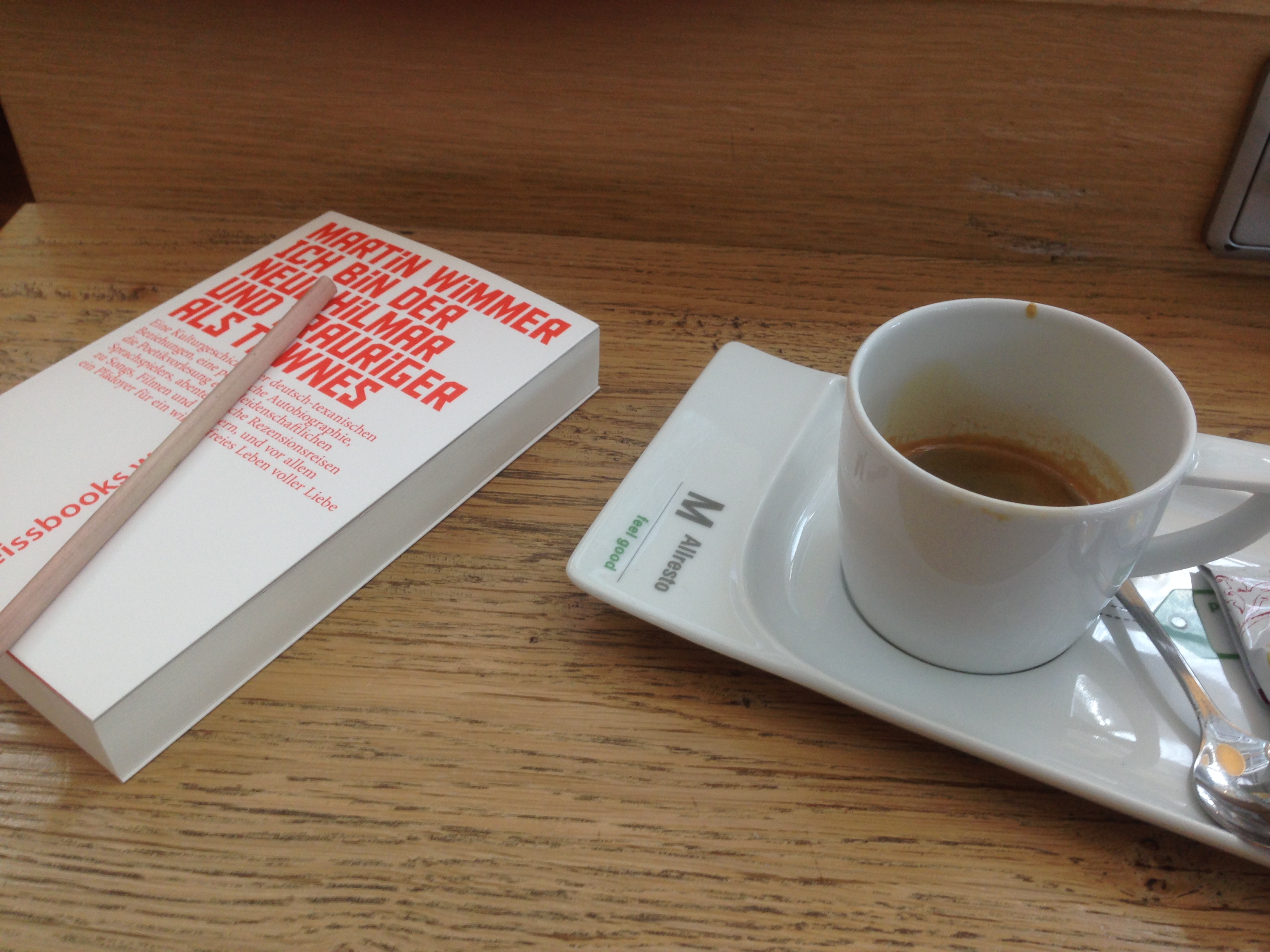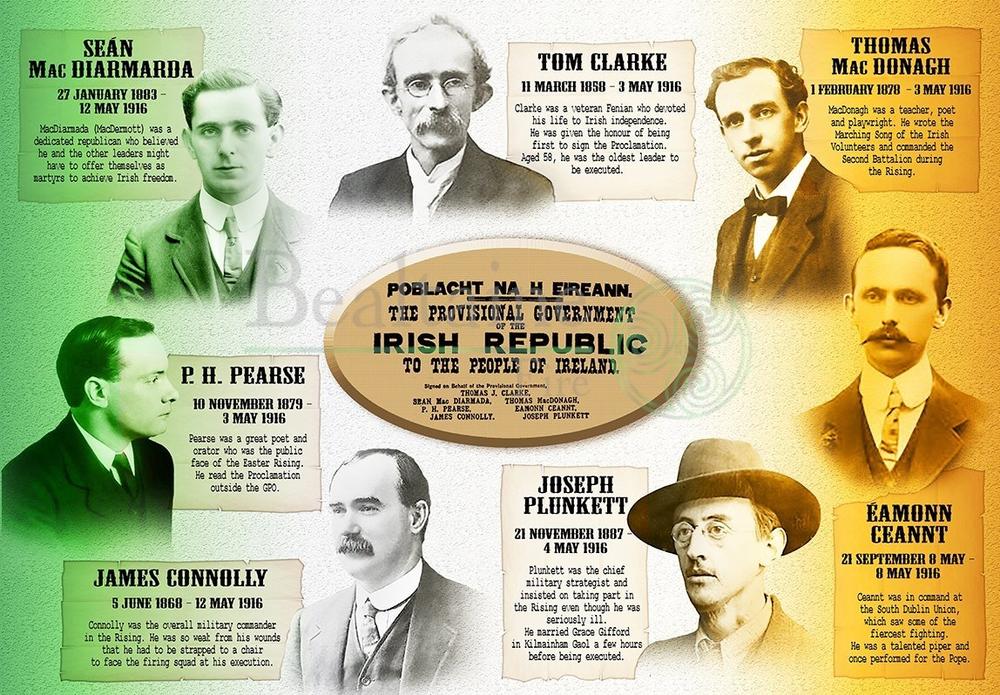Vorangestellt: Das hier ist kein Freundschaftsdienst.

Da steht er und liest, in schwarz-weissem Gwand. Der Man in Red.
Aber von Anfang an: Da sitz ich neulich im Vereinsheim Schwabing, dem charmanten, urechtmuenchnerischen Vorhof zum Lustspielhaus – zum ersten Mal, letzeres eigentlich unverzeihlich. Schwabinger Schaumschlaeger also. Angemessen aufgeregt, wie das so ist, wenn da oben jemand auf der Buehne steht, der dir nicht nur von intensiver Werkrezeption (Endlich mal live erleben!) oder vom Bravo-Starschnitt her (Wie sieht der wohl in echt aus?) bekannt ist, sondern in der Tat aus dem leibhaftigen Leben der eigenen Schwabinger Vergangenheit und der nun bundeslanduebergreifenden Gegenwart. Dann liest er da oben aus seinem ersten richtigen Buch. Richtig, weil auf amazon bestellbar, mit ISBN-Nummer und so.
Daher der anfaengliche Freundschaftsdisclaimer. Denn auch wenn der Autor (und vielleicht sogar der Erzaehler) des Buchs, ueber das ich hier schreibe, und aus dem (im Nachhinein betrachtet) gut ausgewaehlte Stellen im Vereinsheim vorgetragen (OK, eher vorgelesen) wurden, ein guter alter Freund ist (alt im Sinne von schon lange, weil was ist schon alt heutzutage?), versichere ich hiermit eidesstattlich und standesgemaess, dass es im Anschluss an die Lesung und den Erwerb einer druckfrischen, freundschaftlich-liebevoll signierten Erstausgabe keine kartellrechtlich bedenklichen Absprachen gegeben hat, die Authentizitaet und Ehrlichkeit der folgenden Zeilen in Zweifel ziehen koennten.

Da wird hinter meinem Ruecken signiert.
Da ist was schiefgelaufen!
“Und wenn jemand mehr als fuenf Absaetze dieses Textes am Stueck liest, muss auch was schiefgelaufen sein”, heisst es da auf Seite 175 des unter anderem “Eine Kulturgeschichte der deutsch-texanischen Beziehungen” untertitelten Werks “Ich bin der neue Hilmar und trauriger als Townes” (am 1. August 2016 im hessischen weissbooks-Verlag erschienen). Mist, dann ist bei mir wohl was gruendlich schiefgelaufen, so rein gesundheitszustandsmaessig, denn nicht nur habe ich sogar mehrere Seiten, manchmal sogar mehrere Kapitel am Stueck, ich habe das Buch sogar zuende gelesen, in wenigen Tagen. Ziemlich schnell, nicht nur fuer meine normale Minus-Warp 5-Lesegeschwindigkeit. Vielleicht ging das auch so geschmeidig vonstatten, weil im Texas Italiens, sprich in bzw. auf Sizilien gelesen?
Nun also zum Buch.
Viel (OK, a bisserl) wurde bereits medial gemunkelt ueber die angebliche Identitaet des Menschen, der da erzaehlt … Martin Wimmer: Bueroleiter des Frankfurter Buergermeisters; Martin Mueller: BMN-Texter, Top-Manager diverser teils noch, teils nicht mehr existierender Unternehmen, reichlich Abgefundener; DJ Borderlord: Programmatischer Plattentellerkoenig in Suedstadt und Substanz; Willi Ehms: Muenchner Poet mit Hang zu boarisch-texanischen Songtexten. Wenn man selbst heute noch mit mahnendem Erstsemestergermanistikfingerzeig und einem “Der Autor ist nicht der Erzaehler” augenbrauenhebend medial punkten und ueberraschen kann, moechte ich mich damit gar nicht erst aufhalten. Been there, done that.
Ist auch herzlich unerheblich.
Ebenso unerheblich die Frage nach dem “Was ist das denn nu?”. Weil wenn nicht “Roman” vorne drauf steht, oder das Buch in der Spiegel Sachbuch-Bestsellerliste auffindbar, ist der geneigte Leser oftmals verwirrt, weiss nicht, welche Schublade er fuer seine Gedanken beim Lesen oeffnen soll. Autobiografie? Abhandlung? Vielleicht doch Fiktion irgendwie? Poesie? Essay? Letzteres legt der Erzeahler an der ein oder anderen Stelle selbst nahe, vielleicht aber auch nur, um in die Irre zu fuehren oder Schubladengelueste zu befriedigen? Vielleicht aber auch … egal.
Dann der Titel des Buchs: Fuer Feuilletonisten ein gefundes Fressen, fuer Martinfreunde eine gewohnt gelungene Mischung aus PR und Substanz. Viel wichtiger der Untertitel: “Eine Kulturgeschichte der deutsch-texanischen Beziehungen, eine politische Autobiographie, die Poetikvorlesung eines leidenschaftlichen Sprachspielers, abenteuerliche Rezensionsreise zu Songs, Filmen und Buechern, und vor allem ein Plaedoyer fuer ein wildes, freies Leben voller Liebe.” Da is mal ein Statement. Nur was fuer eins?
In jedem Fall ist das Werk mal eines: ein Buch. Sogar eines in der von mir bevorzugten Variante, mit Buchdeckel, Seiten aus Papier und so (“Papa, warum liest Du immer mit Bleistift???”), Titelseite, Klappentext (auf plattenisch: Linter Notes), und innendrin: ganz viele Worte.
Schlaue Worte, verspielte Worte, Wortspiele, selbstverant-wort-ete Spiele, Gedichte oder Songtexte (thin line!), Erinnnerungen (ob beschoenigt oder bewusst betraurigt, bleibt, der teilweisen Ignoranz gedankt, unkommentiert), Beobachtungen, politische Vermessungen der (eigenen) Welt, allem voran aber:
Beziehungsworte.
Denn wenn das Buch irgendwas ist, dann ein Beziehungsbuch. Anhand eigener und fremder Beziehungen, eigener Beziehungen mit Fremden, der Fremden Beziehungen untereinander, eigener Fremdbeziehungen und teils befremdender Eigenbeziehungen dieses unter dem aktuellen Sammelnamen Martin Wimmer subsummierten Erzaehlautoren, des traurig-neuen Hilmar-Townes, werden viel groessere Semmeln gebacken, Steaks gewendet, Eier gekrault. Da geht es um:
Die Beziehung des Texaners an sich zum Deutschen, vor allem zum deutschen Outlaw, dem Bayern: “Strauss und Reagan, Bush und Stoiber, […], Muenchen und Austin, […], Spider Murphy Gang und Texas Tornados, […], Cactus Café und Substanz, […], Kerrville Folk Festival und Tollwood, Musikantenstadl und Austin City Limits, Liesl Karlstadt und Janis Joplin, […], Larry Hagmann und Helmut Fischer […]. Mehr Zwiefache ueber Bayern und Texas als je zuvor in der Geschichte.”
Die Beziehung zwischen Country-Musik und den Folkloren oder Kunstbewegungen im Rest of World (denn was fuer den Bayern die Weisswurschtgrenze, ist fuer den Texaner der Cordon um Austin, San Antonio und Luckenbach): “‘I began to see a connection between country music and Dada.’ Das ist mein Mann.”
Die Beziehung der Songtexte eines Townes van Zandt, eines Jerry Jeff Walker, eines Steve Earle, eines Woody Guthrie, eines Bob Dylan zu denen eines Wolfgang Ambros, eines Markus Rill, eines Ostbahn Kurti, eines Helge Schneider, sogar eines Roberto Blanko, einer Mary Roos. Und vieler mehr, denn dem self-fulfilling, self-pleasing, self-impressing Namedropping vermoegen selbst die Wort-, Satz-, Seiten- und Kapitelenden keine Grenzen zu setzen in diesem … Dings: “Alles ist Perspektive., Auswahl, Zusammenhang. […]. ‘Es haengt alles irgendwo zusammen. Sie koennen sich am Hintern ein Haar ausreissen, dann traent das Auge.’”
Die Beziehung dieser Texte und Singer und Songwriter zu und in Filmen, zu und in Buechern, zum und im Leben, und ueberhaupt: Ist das Leben nicht ein einziger Text?: “Mein Leben, dieser Text.”
Die Beziehung zwischen politischen Richtungen und Programmen, quasi Ortsbesimmung und Wegbeschreibung, und ist nicht ueberhaupt alles nichts ohne Kultur?: “Wer sagt und tut, was er soll oder muss, ist Spiesser, rechts, boese. Wer sagt und tut, was er kann oder will, ist Rebell, links, gut.”
It ain’t me, babe.
Mal auf, stets aber zwischen den Zeilen, geht es jedoch vor allem um die Beziehungen der Autoerzaehlers (klingt irgendwie autoerotisch…). Die Beziehung des Bayern Martin zu Texas, den USA, und vielen anderen geheimnisvollen Orten dieses Planeten, wie Muehldorf, Ampfing, Madrid, Frankfurt, und natuerlich Schwabing. Die Beziehung des Texters und Songwriters Willi Ehms (ohne Singer, weil weniger Performer als Reformer) zu all dem und den oben Erwaehnten. Die Beziehung des oft gescheiterten und doch mittlerweile angekommenen Womanizers Mueller zu einer schier unzaehlbaren Menge an willigen, an enzyklopaedischen Lippen haengenden Frauen (ich erinnere mich nur zu gut an Frustrationsmomente im Schwabinger WG-Zimmer neben der Muellermartinbibliothek, Ladys ohne Ende am Boden vor dem Vinylaltar und seinem Hohepriester … Shit, und ich hoer Musik nur, weil sie mir gefaellt, wie banal. And he’s gonna score again!): “Ich habe in meinem Leben mit so dreissig Frauen geschlafen, vielleicht ein Dutzend mehr, und dann habe ich waehrend meiner Ehe noch mal ein halbes Dutzend nachgeschoben, darunter vor allem die besten Freundinnen meiner Frau.” Koennte man so stehen lassen, ware aber unfair, denn danach kommt noch: “Nein, habe ich nicht aber was das fuer Songs geworden waeren, denen darf man schon mal kurz hinterhertrauern.”
Dieser Satz ein Satz, der die programmatische Staerke und gleichzeitige sublime Schwaeche dieses Buchs ausmacht. Denn es geht unterm Strich ja – allen kokettierenden und geschickt platzierten Gegenteilsbekundungen zum Trotz – um die Beziehung dieses Wimmer Martin zu sich selbst. Wegweisend hierfuer der Einstieg im zweiten Kapitel, nicht in Townes-, sondern eher in Dylan-Manier: “…und so heisse ich heute Wimmer Martin und weiss nicht, wer ich bin”, das ist wimmerisch fuer “I’m not there” oder “It ain’t me, babe”.
Mir ist das ja grundsympathisch, denn ich habe auch noch keine Ahnung, wer oder was ich werden will, wenn ich mal gross bin. Sympathisch und nostalgisch auch das viele mir persoenlich Bekannte, weil selbst miterlebt oder selbst viele Male erzeahlt bekommen. Lehrreich auf jeder Seite (“Liebes Kind, deswegen lese ich mit Bleistift, damit ich danach von vorne beginnen kann, und zwar mit Mr. Wikipedia und Lady Spotify an meiner Seite!”). Erfurchtsgebietend ob des auf diesen 282 Seiten zur Schau gestellten, vorhandenen wie recherchierten und somit danach vorhandenen Wissens (was mir ja bewusst war, nevertheless: WTF, man?!? Respect!). Aber auch erfurchtsgebietend ob dieser unglaublich vielen, nicht nur sterilisierten und aesthetisierten, niemals anaesthesierenden Saetze und Formulierungen, sondern vor allem vor der Schoenheit vieler in Worte gekleideter Gedanken und Gefuehle.
Ueber modernen Musikkonsum: “Die Musiksammlung der Welt ist jetzt grenzenlos geworden, nur muss jetzt nicht mehr der Geldbeutel mitwachsen, sondern die Neugier, und man braucht keine Regalflaeche im Wohnzimmer mehr zum Stapeln des Nichtmehrgehoerten, sondern Erlebnisflaeche im Herzen zum Geniessen des Ebenerlebten.”
Ueber die Liebe: “Alle paar Jahre kommt die Liebe vorbei, aber wennst nicht dauernd nachtelefonierst, wird halt auch nix draus.”
Ueber das Leben: “In den Geschichten meiner Grosseltern war die Kunst immer: zu ueberleben. […] In den Geschichten meiner Eltern ging es dann schon darum: besser zu leben.” Oder: “Dokumentationen des Scheiterns sind immer bessere Filme als Sommermaerchen des Gelingens.” Oder einfach: “Lieste was, lernste was.”

Zusammenfassend und in diesem Sinne (denn sonst ginge das hier noch ewig weiter, andererseits: who gives a fuck, it’s my blog!):
Kaufen und vor allem: Lesen!
Vielleicht nicht in einem durch wie ich (denn zwischendurch mal ins Mittelmeer huepfen koennen tat schon gut). Vielleicht nicht mit der gleichen Begeisterung an den gleichen Stellen (denn Selbstverliebheit und verbale Autoerotik Haas’scher Schule sind moeglicherweise doch nicht (w)immer Jedermanns Ding), aber dann sicher an anderen Stellen (denn jeder Mensch, der wissen moechte, was die Welt im Innersten zusammenhaelt – naemlich Sprache, Musik, Kultur, und wilde, freie Liebe – findet hier gewiss sein Saatkorn).
Schliessen wir mit den Worten des “Man in Red”, der doch meist eher schwarz-weiss traegt und vielleicht, wie sein grosses Vorbild Townes, ein Traurigliedmacher und Traurigliedlieber ist, maximal ein Melancholieliebhaber, niemals aber trauriger als Townes (kann ich bestaetigen, liest sich auch nicht so, und somit vermutlich auch nicht der neue Hilmar?):
“Wenn irgendjemand diese Welt rettet, dann junge Frauen. Und texanische Songwriter. Der Humor. Die Musik. Die Liebe.”
Ueber die texanischen Songwriter kann man natuerlich selbst als Minimal-Insider trefflich streiten (wie ueber vieles in diesem Beziehungsbuch – Achtung: beabsichtigt!). Andererseits hier einer der Zufaelle im Leben, die es nicht gibt: Da reise ich als Bayer (OK, Franke) und Muenchner (OK, Zugroaster), bewaffnet mit diesem Texas-Bayern-Fuehrer und einem Rock ‘n’ Roll-Shirt am Leib, als Cumpare, Cugnato, Marito und Pabaa in dieses italienische Texas, und was lese ich da im Editorial der Juli-Ausgabe der “Heritage Post”?
“Der Bayer ist der Cowboy von Deutschland. […] Stur und eigen wie ein Cowboy – im wilden Sueden Deutschlands.”
Aber interessant.













